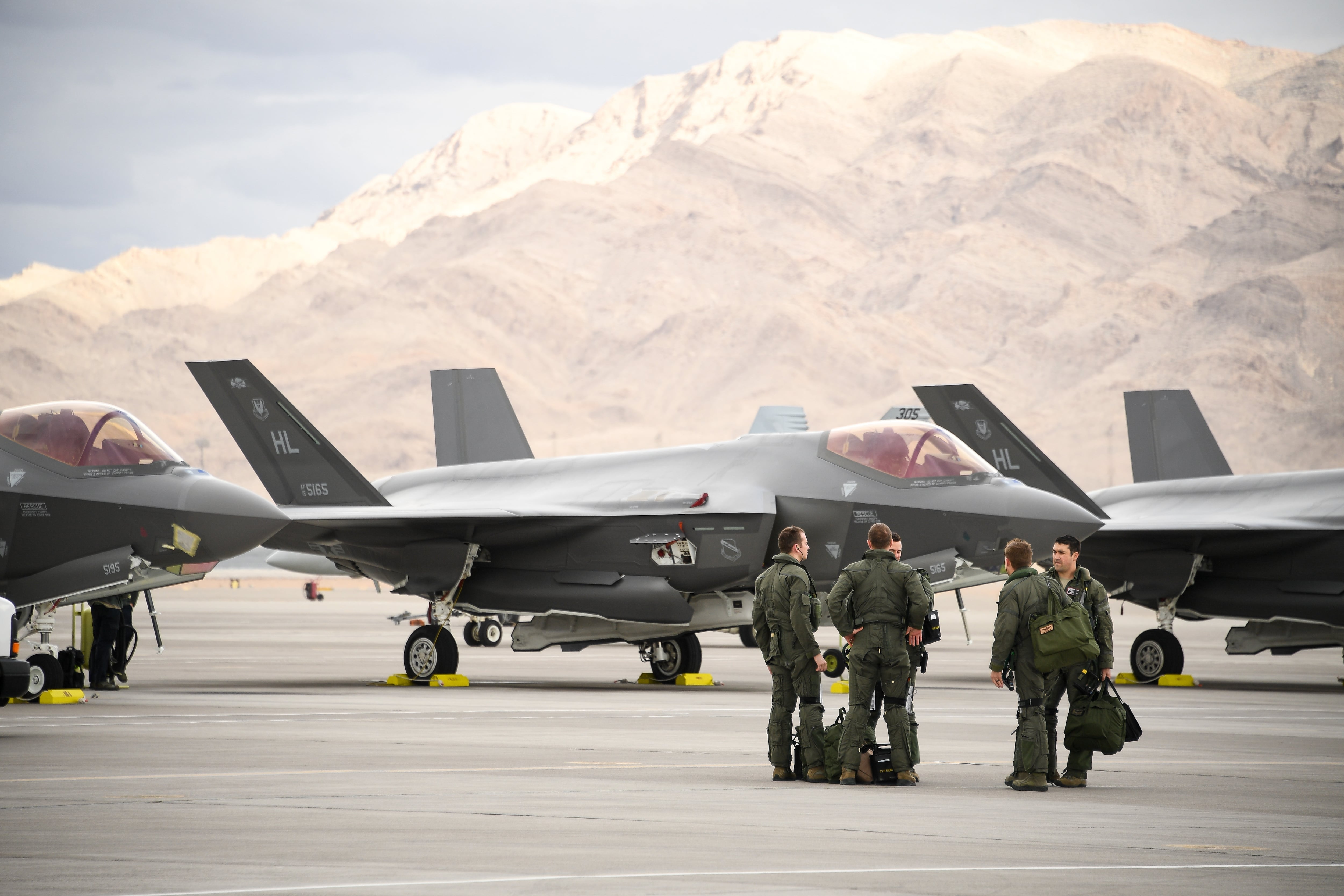WASHINGTON —Turkey’s purchase of Lockheed Martin’s F-35 is in jeopardy due to its order of a Russian air defense system, but Lockheed executives on Tuesday appeared unruffled by the dispute.
Rather, they signaled that an inconsistent demand by the U.S. military — particularly the Air Force — is a bigger long-term concern.
During an April 23 earnings call, one Wall Street analyst asked how Lockheed is dealing with shifts in the F-35 production rate caused by fluctuations in U.S. demand and the uncertainty of future orders with Turkey, Canada and Italy.
Turkey has ignored pleas from NATO to scrap its deal with the S-400 surface-to-air missile system, and the Trump administration could soon face a decision on whether to remove Turkey from the joint strike fighter program.
Lockheed Chief Executive Marillyn Hewson did not mention Turkey by name, but responded that decisions about Turkish participation in the program remain with the U.S. government.
“I suppose the JPO [F-35 joint program office] will have to figure out how they manage what aircraft they buy at what point in time, as countries look at their procurement decisions or as things change among some of the partners that we have,” she said. “But I think they’re managing that risk quite well and the demand is very strong.”
Lockheed Chief Financial Officer Ken Possenriede noted the small size of foreign contracts.
Turkey is “an important ally of ours, a least today,” he said, but the country plans to buy only eight aircraft per lot over the upcoming block buy, which spans lots 12 through 14. Lockheed is hopeful that Italy will sustain its interest in the program, but Possenriede noted that its buy is “not a material number of aircraft.” Meanwhile, Canada is still not yet under contract for the F-35, but plans to start a new fighter competition as soon as next month.
“I think the frustrating piece for us is the United States Air Force and we’ll continue working with our customer and with representatives in the government on what’s the right path forward there,” Possenriede said.
RELATED

In the fiscal year 2020 budget, the U.S. Defense Department plans to buy 78 joint strike fighters for the Air Force, Navy and Marine Corps. However, the Air Force, the F-35’s largest customer, requested just 48 F-35As in FY20 and intends to buy only 48 F-35As annually over the next five years — a far cry from the 60 jet buy rate that Air Force officials had previously held as a goal.
Meanwhile, Turkey is set to buy 100 F-35As over the entirety of the program. Turkish companies are also part of the program’s industrial base and play a role in sustainment — a complication that neither Hewson nor Possenriede commented on.
By FY20, Lockheed will be able to offer an F-35A conventional take off and landing model at a cost of $80 million or less, Possenriede said. The company is also working to lower sustainment costs to $25,000 per flight hour by 2025, which is on par with the cost of flying fourth generation fighters.
However, it remains to be seen whether that will be enough to entice the Air Force to increase its buy rates, especially as it also plans to begin procuring the F-15X from rival Boeing in FY20.
Defense Department officials have maintained that the F-35 program of record remains the same, and that overall quantities aren’t in danger of being slashed if the services buy the jets more slowly. Hewson said she sees that as a positive sign.
“How they manage what they buy year to year, that’s always been a challenge as they look at what their overall needs are relative to the budgets that they have to work with,” she said. “I think that’s going to continue.”
Hewson also believes that there are opportunities to extend the current program well beyond the 3,300 sales that Lockheed has racked up so far, citing reports of Poland and Romania’s interest in the jet.
“We frankly have great capacity on this program. We’ve got facilities in place; we’re going to be in the position to produce over 180 aircraft a year. We’re prepared to do that,” she said.
Valerie Insinna is Defense News' air warfare reporter. She previously worked the Navy/congressional beats for Defense Daily, which followed almost three years as a staff writer for National Defense Magazine. Prior to that, she worked as an editorial assistant for the Tokyo Shimbun’s Washington bureau.




